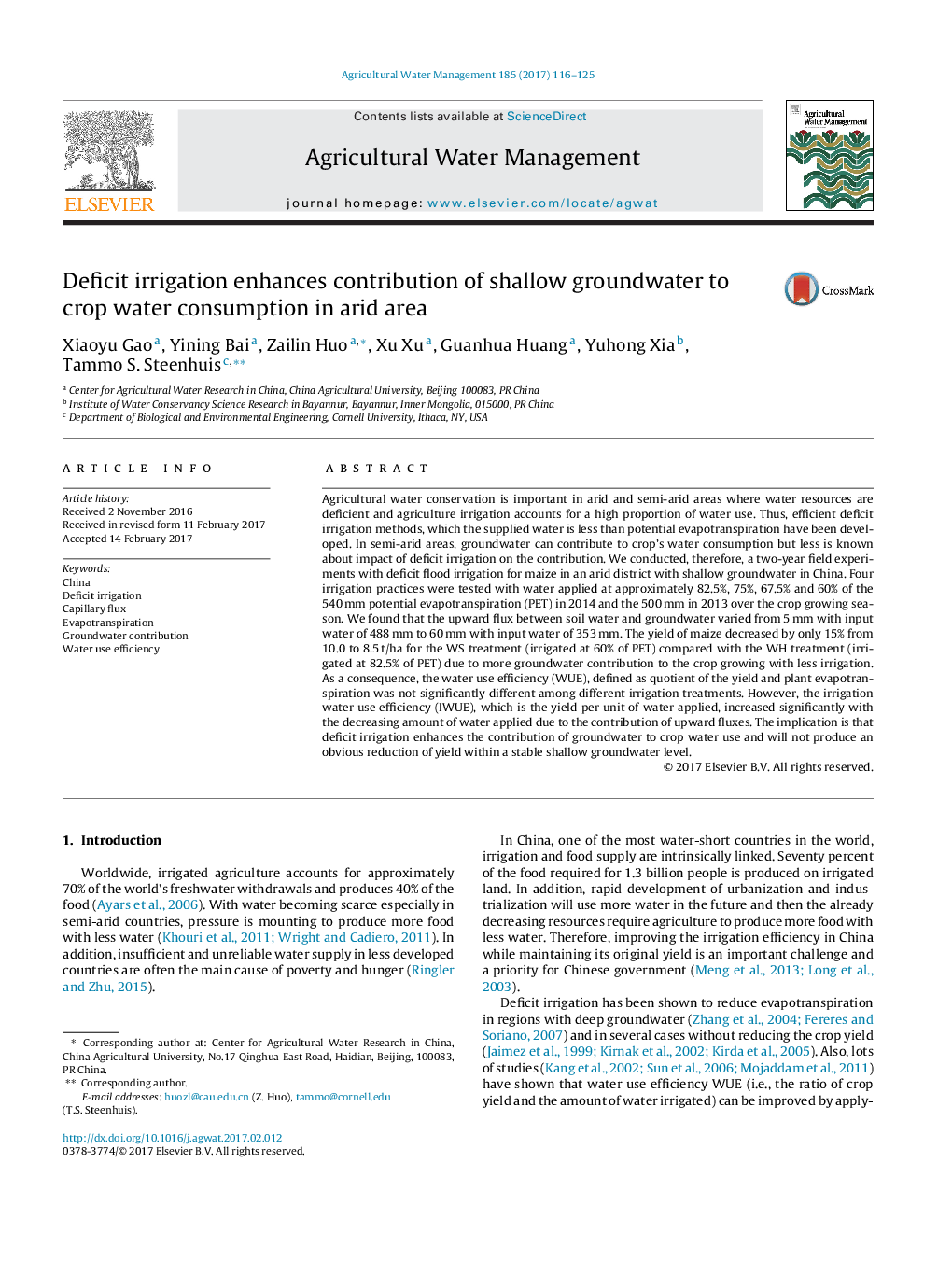| Article ID | Journal | Published Year | Pages | File Type |
|---|---|---|---|---|
| 5758522 | Agricultural Water Management | 2017 | 10 Pages |
Abstract
Agricultural water conservation is important in arid and semi-arid areas where water resources are deficient and agriculture irrigation accounts for a high proportion of water use. Thus, efficient deficit irrigation methods, which the supplied water is less than potential evapotranspiration have been developed. In semi-arid areas, groundwater can contribute to crop's water consumption but less is known about impact of deficit irrigation on the contribution. We conducted, therefore, a two-year field experiments with deficit flood irrigation for maize in an arid district with shallow groundwater in China. Four irrigation practices were tested with water applied at approximately 82.5%, 75%, 67.5% and 60% of the 540Â mm potential evapotranspiration (PET) in 2014 and the 500Â mm in 2013 over the crop growing season. We found that the upward flux between soil water and groundwater varied from 5Â mm with input water of 488Â mm to 60Â mm with input water of 353Â mm. The yield of maize decreased by only 15% from 10.0 to 8.5Â t/ha for the WS treatment (irrigated at 60% of PET) compared with the WH treatment (irrigated at 82.5% of PET) due to more groundwater contribution to the crop growing with less irrigation. As a consequence, the water use efficiency (WUE), defined as quotient of the yield and plant evapotranspiration was not significantly different among different irrigation treatments. However, the irrigation water use efficiency (IWUE), which is the yield per unit of water applied, increased significantly with the decreasing amount of water applied due to the contribution of upward fluxes. The implication is that deficit irrigation enhances the contribution of groundwater to crop water use and will not produce an obvious reduction of yield within a stable shallow groundwater level.
Related Topics
Life Sciences
Agricultural and Biological Sciences
Agronomy and Crop Science
Authors
Xiaoyu Gao, Yining Bai, Zailin Huo, Xu Xu, Guanhua Huang, Yuhong Xia, Tammo S. Steenhuis,
